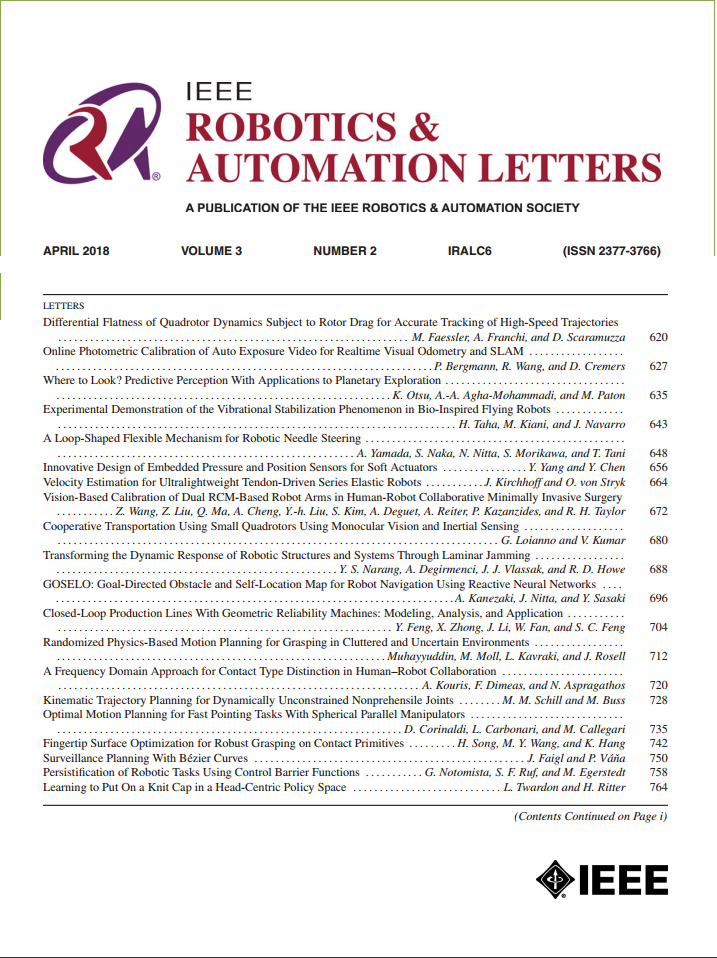Waliner: Lightweight and Resilient Plugin Mapping Method With Wall Features for Visually Challenging Indoor Environments
IF 4.6
2区 计算机科学
Q2 ROBOTICS
引用次数: 0
Abstract
Vision-based indoor navigation systems have been proposed previously for service robots. However, in real-world scenarios, many of these approaches remain vulnerable to visually challenging environments such as white walls. In-home service robots, which are mass-produced, require affordable sensors and processors. Therefore, this letter presents a lightweight and resilient plugin mapping method calledWaliner:轻量级和弹性插件映射方法,具有视觉挑战性的室内环境的墙壁特征
基于视觉的室内导航系统先前已被提出用于服务机器人。然而,在现实场景中,许多这些方法仍然容易受到视觉上具有挑战性的环境(如白墙)的影响。大量生产的家庭服务机器人需要负担得起的传感器和处理器。因此,本文提出了一种名为Waliner的轻量级弹性插件映射方法,该方法使用RGB-D传感器和配备神经处理单元(NPU)的嵌入式处理器。Waliner可以很容易地在现有算法中实现,并通过利用a)结构建筑组件(如墙壁),以最小的计算开销在视觉挑战性环境中增强2D/3D映射的准确性和鲁棒性;b)曼哈顿世界假设;c)基于扩展卡尔曼滤波的姿态估计和地图管理技术,在不同光照和无特征条件下保持可靠的映射性能。经过各种真实家庭场景的验证,该方法在使用最少资源的情况下,通过地图相似指数(MSI)测量的地图一致性提高了5%以上。
本文章由计算机程序翻译,如有差异,请以英文原文为准。
求助全文
约1分钟内获得全文
求助全文
来源期刊

IEEE Robotics and Automation Letters
Computer Science-Computer Science Applications
CiteScore
9.60
自引率
15.40%
发文量
1428
期刊介绍:
The scope of this journal is to publish peer-reviewed articles that provide a timely and concise account of innovative research ideas and application results, reporting significant theoretical findings and application case studies in areas of robotics and automation.
 求助内容:
求助内容: 应助结果提醒方式:
应助结果提醒方式:


